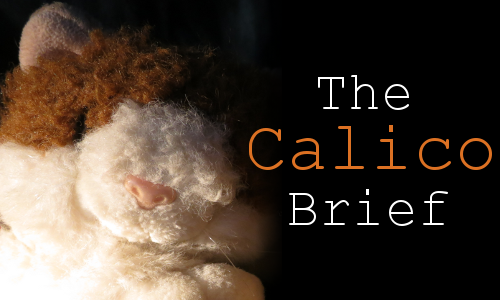
Now that I’ve automated some marketing and patched up a few psychological flaws, I’m almost ready to push products to my network. But there’s one more scale I have to implement before I put my life savings into billboard space.
Before, when contemplating a scale to my physical book distribution system, I estimated that shipping ten books at once was ten times less work, per book, than shipping one by one. Today I’m going to use an inverse of that theory to scale my marketing efforts.
Right now, there are at least ten destinations within the website, each with separate audiences. The #SickGoTakedowns hashtag used to introduce the Snapback series to Go players might not be effective on a potential Ghostcrime reader, who may instead be pulled in with neon ghost/robot art. But if it's easier to navigate around the site, they'll explore and discover these other purchasing opportunities.
If you have a similar portfolio of disconnected comedy products, this next part will definitely be applicable.
The trick is to unite all of your unrelated products into one monstrous platform. Each book, blog, or game becomes a module of a much larger machine, and the marketing of one has the effect of marketing the whole. Now we must oil the machine, which sounds disgusting, but it’s necessary.
First, I’m going to analyze my blogs to make sure it’s easy to jump from post to post. ScaleQuail has a linear format, and prominent links page forward and backward, so it’s fine for now. The badger blog, however, needs some love. It’s a venerable story of human/animal relations, but by default it displays latest posts first. At this stage, I need to accommodate new readers who want to read the whole thing from the beginning.
This is as easy as improvements get, just a link to the posts sorted in reverse:
Next, I’ll look at the Mirth Turtle blog, which hosts a collection of older comedy essays, game reviews, and clickbait listicles. The range of topics is broad, so a custom recommendation engine is required here. It’s a simple build, choosing two posts related by Category or Tag, then a random third post for variety. With some new thumbnails to denote category, it’s done:
Getting readers deeper into the blogs is one thing, but to go from free short-form comedy to buying my entire creative output, they need to hop around. I was originally thinking a kind of an internal ad network, but everyone hates ads! That’s why you all use ad-blockers? (you should be using an ad-blocker)
I opted for a less obtrusive design — a bar along the top that lets you know you’re in a sub-area, with easy navigate home and also space to push the lifetime membership. Please buy a lifetime membership.

How innovative, you’re probably saying. A bar. Yeah, how about you just go to hell, you piece of shit.
Now that my products are woven together into a multi-faceted revenue-generation monolith, it’s time to drive some serious traffic. In true ScaleQuail fashion, I’m going to accomplish this by orchestrating a marketing cyclone.
The difference between a cyclone of marketing and the regular kind is chaos. A traditional marketing campaign has focus. A marketing cyclone hits the populace with so many different ideas, they’ll wonder with each new ad they see whether it’s also secretly one of yours. A marketing cyclone is loud, unpredictable, and it’ll foster in the customer a paranoia that it’ll strike again at any moment.
A revenue monolith is perfectly suited to this kind of campaign, but if I’ve learned anything from the internet, it's that the Hootsuite hopper doesn’t fill itself. It’s hungry for content, like the public, and a well-planned marketing cyclone demands high-quality debris. NEXT →
After completing the essential step of fusing my content into a single monolith to better coalesce profits, I also committed to blasting out a marketing cyclone. However, I’m going to need sharable content of the highest quality.
We’ll start with a bit of melon-driven marketing. I believe there’s a universal love for large, juicy fruit, but we’ve all seen arguments arise over which type of melon is supreme. To capitalize off this conflict, I’ll build a standalone melon selector:
The user is given a choice of melon, generic enough to project their ideal melon onto, and passes through to a melon takeover of the main website:

See the site through a melon lens.
It’s the most basic form of content I want to inject into the cyclone — seemingly unrelated to the flagship products, but funneling traffic to them in just a few non-threatening clicks.
I’ve tried this strategy before, most notably with ClamBlog, a blog about clams written by “other people” where I occasionally do an interview about a non-clam-related new product.
All in all, it only ever promoted one thing: a misguided interactive fiction engine I’d built. While that captured no one’s imagination, ClamBlog was a solid marketing idea, suffering, I think, from its inherently disgusting subject matter.
Still, I was right about one thing — there’s demand for interactive fiction. Years ago, I wrote a book about a real estate development company run by cats, and although it arguably sucked, it’s ripe for a playable sequel.
Promising I’d treat myself to a fine bottle of cognac once completed, it came together pretty quickly, and a bit of stuffed animal photography later, it’s ready to go:

As Calico, you go on office adventures, picking up office supplies that help you solve puzzles later.
This should satisfy the IF crowd, and maybe some furries too, but there’s a new generation of gamers who prefer “idle” games, which run in the background while they go about their other business. Using vivid memories of that time I miserably failed at being a day trader, I’ll build a bare-bones stock market simulation for those craving intermittent financial excitement:
This doesn’t make me any money directly, but it might be a good platform to sell thematically-related products. The marketing cyclone still needs more content, so obviously the course of action now is to produce a gold credit card for the tie-in.
Magnetically encoded with unique jokes, the Comedy Gold lustrecard is the financial instrument of laughter — if you can find a card reader that will actually tell you what’s on it.
Is this not a product that people want? It’s a meta joke about the inaccessability of our own money in a civilization in the stranglehold of corporate technology. Of course it’s a good product. Don’t tell me that I don’t understand capitalism.
I’m not going to sell these outright, but rather use them to shine up the Lifetime Membership package, and raise the price accordingly.
Now that the marketing cyclone is whirling with content, we’re almost ready to wreak revenue chaos on the first cohort of pre-customers. However, if we want to optimize our cyclone for maximum devastation, we have to make the debris much heavier.
Let’s start with The Calico Brief above. It’s already a hefty offering, but a completionist may be curious about paths they missed, and a hacker-fan may want to feed it into an AI for their own amusement. To satisfy these demands, I’ll release its full story code, 35,000 words of cat workplace adventure, on GitHub. Now that’s content marketing!
Next, let’s upgrade the melon selector. Although the data I’m collecting off the melon clicks could drive further business decisions, the MVP only has one feature, and although it’s iconic and mobile-friendly, a discerning customer expects more from their software experiences. As such, we’ll transform it into a full-blown kitchen management suite:
Now users will get a soothing inventory management system for their pantries and an easy way to plan shops. Oh, do you already have software that solves this problem? That’s right. You don’t. Your food just rots.
Finally, as a bonus for power users who have a Linux-based terminal in their kitchen, I’ll also release a command-line integration:
Finally: you can use the melon selector without having to haul out your mobile device while cooking.
Now that our content has some weight to it, our marketing cyclone can hit at peak effectiveness. But if we’re serious about operating a business that runs by itself, so that at some point we can go enjoy the outdoors, we’ll need more than just great content.
The final step is to plug our business into an Infinity Drive. NEXT →

Come back soon to see how the next plan hatched.